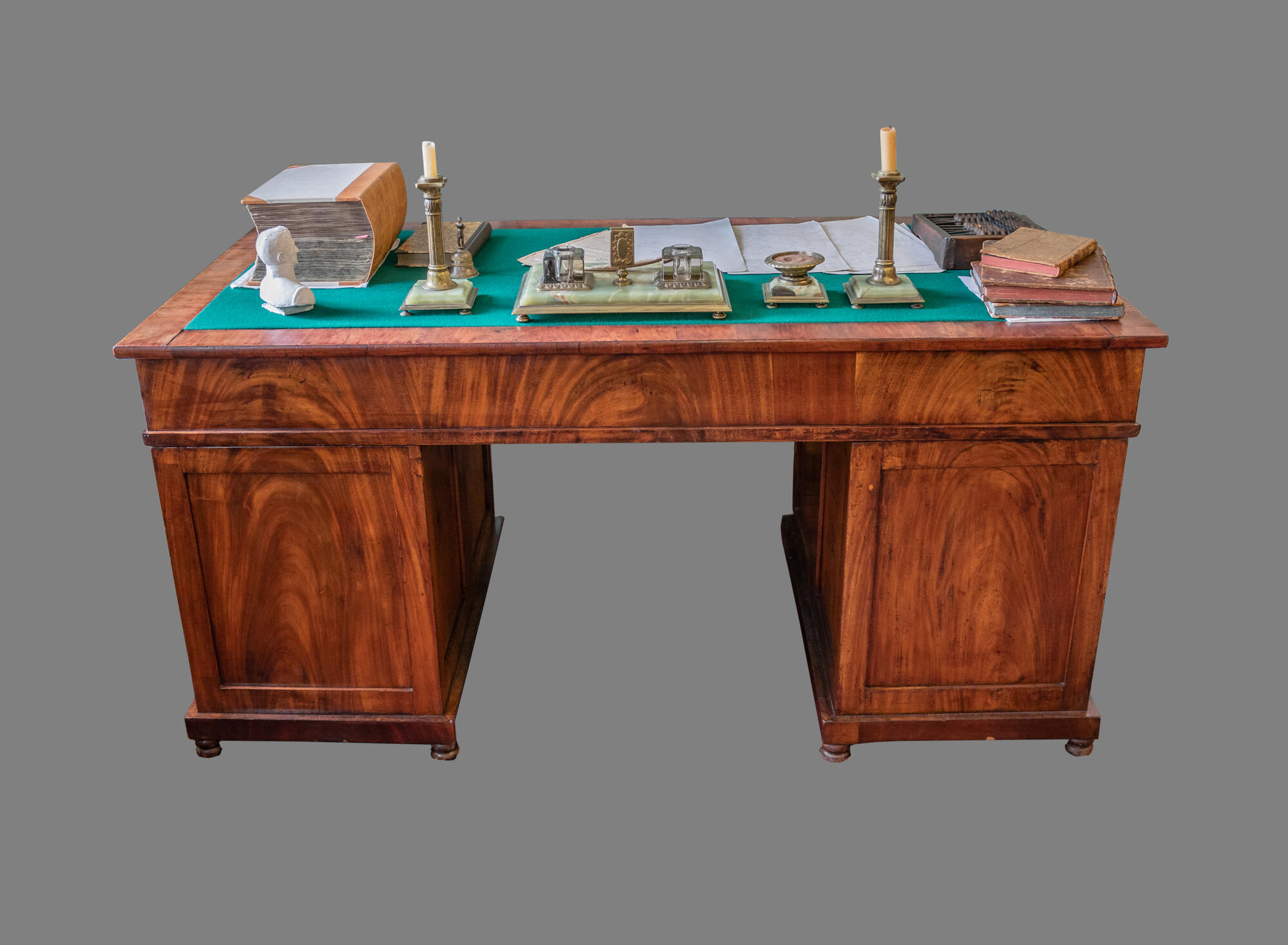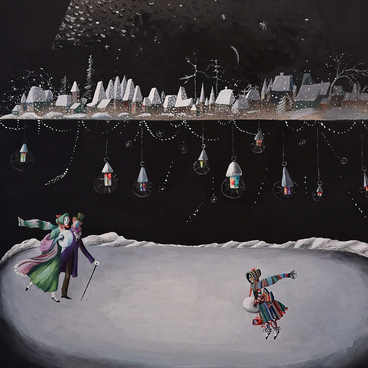The composer’s desk from the Moscow apartment was among the first items transferred from the Klin Museum to the Pyotr Tchaikovsky Estate Museum in Votkinsk, his small homeland. The rectangular table body is finished with brown veneer. The tabletop features an insert made of green cloth.
Composer Pyotr Tchaikovsky acquired this table in the early 1870s, and until 1877 it had stood in his Moscow apartment. During this time, he composed the symphonic fantasy “The Tempest”, the String Quartet No. 2 and his most frequently performed work, the Piano Concerto No. 1. He also worked on the Third and Fourth Symphonies, the Third Quartet, Fantasy “Francesca da Rimini” and the opera “Eugene Onegin”.
In Moscow, Tchaikovsky not only composed music, but also taught. In 1865, he graduated with a big silver medal from the First Russian Conservatory in Petersburg and became the youngest faculty member of the Second Russian Conservatory, which was established in Moscow.
Every year he had about 90 students. Tchaikovsky was a demanding teacher and gave them many assignments. Nikolay Kashkin, a professor at the Moscow Conservatory, recalled: “His impeccable conscientiousness, intelligence and knowledge of the art involuntarily forced him to be a good teacher, especially for the more talented students <…> He tried by all means to encourage the talented students to be diligent and persistent in their work…”
The Moscow period of Tchaikovsky’s life and work lasted 12 twelve years, from 1866 to 1878. For 12 years Tchaikovsky worked in all musical genres: he composed five operas, four symphonies, the famous ballet Swan Lake and most of the piano miniatures. He created many of his major works at the time, including the operas ‘The Voyevoda’ and ‘Undina’, the Symphony No. 1 ‘Winter Daydreams’, and the overture-fantasy ‘Romeo and Juliet’.
After 1877, the table was kept by Tchaikovsky’s friend Nikolay Kashin. He donated it to the Moscow Conservatory, and in the early years of the Soviet power, the table entered the State Pyotr Tchaikovsky House-Museum collection in Klin. On the eve of the 100th anniversary of the composer’s birth, in September 1939, the table was transferred to the Tchaikovsky Museum in Votkinsk.
Composer Pyotr Tchaikovsky acquired this table in the early 1870s, and until 1877 it had stood in his Moscow apartment. During this time, he composed the symphonic fantasy “The Tempest”, the String Quartet No. 2 and his most frequently performed work, the Piano Concerto No. 1. He also worked on the Third and Fourth Symphonies, the Third Quartet, Fantasy “Francesca da Rimini” and the opera “Eugene Onegin”.
In Moscow, Tchaikovsky not only composed music, but also taught. In 1865, he graduated with a big silver medal from the First Russian Conservatory in Petersburg and became the youngest faculty member of the Second Russian Conservatory, which was established in Moscow.
Every year he had about 90 students. Tchaikovsky was a demanding teacher and gave them many assignments. Nikolay Kashkin, a professor at the Moscow Conservatory, recalled: “His impeccable conscientiousness, intelligence and knowledge of the art involuntarily forced him to be a good teacher, especially for the more talented students <…> He tried by all means to encourage the talented students to be diligent and persistent in their work…”
The Moscow period of Tchaikovsky’s life and work lasted 12 twelve years, from 1866 to 1878. For 12 years Tchaikovsky worked in all musical genres: he composed five operas, four symphonies, the famous ballet Swan Lake and most of the piano miniatures. He created many of his major works at the time, including the operas ‘The Voyevoda’ and ‘Undina’, the Symphony No. 1 ‘Winter Daydreams’, and the overture-fantasy ‘Romeo and Juliet’.
After 1877, the table was kept by Tchaikovsky’s friend Nikolay Kashin. He donated it to the Moscow Conservatory, and in the early years of the Soviet power, the table entered the State Pyotr Tchaikovsky House-Museum collection in Klin. On the eve of the 100th anniversary of the composer’s birth, in September 1939, the table was transferred to the Tchaikovsky Museum in Votkinsk.


